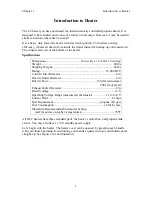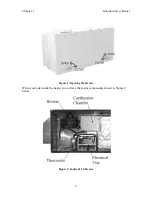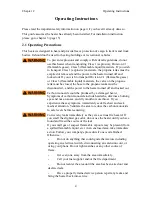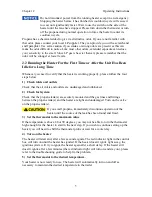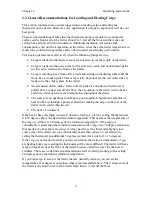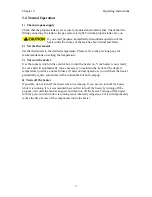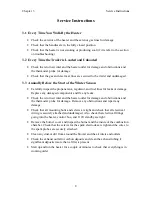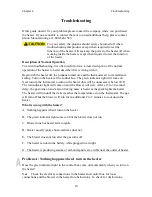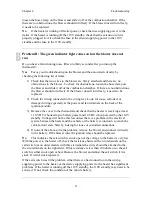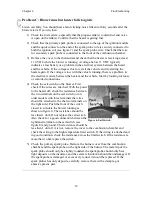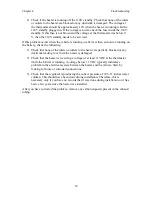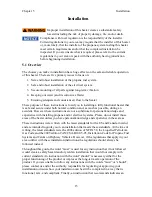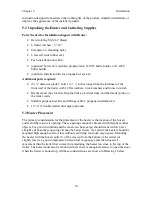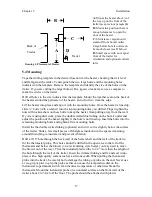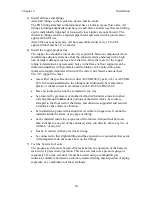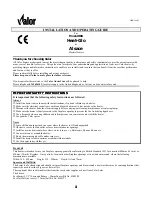
Chapter 5
Installation
Installation
Improper installation of this heater creates a substantial safety
hazard including the risk of property damage, fire, and/or death.
Compliance with local regulation is the responsibility of the installer.
Current regulations in your area may require that the installer of this heater
or, more likely, that the installer of the propane system fueling this heater
meet certain requirements and/or that the completed installation be
inspected. If you are unsure what is required, please refer to the current
regulations in your area or speak with the authority having jurisdiction
before beginning installation.
5.1 Overview
The choices you make in installation have huge effects on the safe and reliable operation
of this heater. There are five primary issues to focus on:
1. Safe and robust installation of the propane fuel system
2. Safe and robust installation of the electrical system
3. Secure mounting of all parts against long-term vibration
4. Keeping out water (and its corrosive effects)
5. Ensuring adequate and consistent air flow to the heater
These purpose of these instructions is to aid you in installing a fully functional heater that
is safe and secure under both normal condition and, as much as possible, during an
accident. However these instructions are not a substitute for personal knowledge and
experience with installing propane and/or electrical systems. Please do not install those
areas of the heater unless you have personal knowledge and experience in these areas.
These instructions were written with the latest standards for the US and Canada in mind
and are intended to guide you in an installation that meets these standards. At the time of
writing, the latest standards were the 2008 edition of NFPA 58, the Liquefied Petroleum
Gas Code and the 2005 edition CAN/CSA-B149.5-05, Installation Code for Propane Fuel
Systems and Tanks on Highway Vehicles. However, if the regulations that apply in your
area conflict with these installation instructions the regulations should always be
followed instead.
Throughout this guide, the word “must” is used for any instruction that if not followed
would create a safety hazard and/or yield an installation that would not comply with
current standards. An instruction with the word “should” is necessary either for the
proper functioning of the product or improves the long-term safe operation of the
product. If you are unable to follow any instructions with the words “must” or “should”,
please contact us and/or the authority responsible for regulating or approving your
installation to discuss how your installation can be still be completed in a way that is
functional, safe, and compliant. Finally, an instruction that recommends indicates an
15

